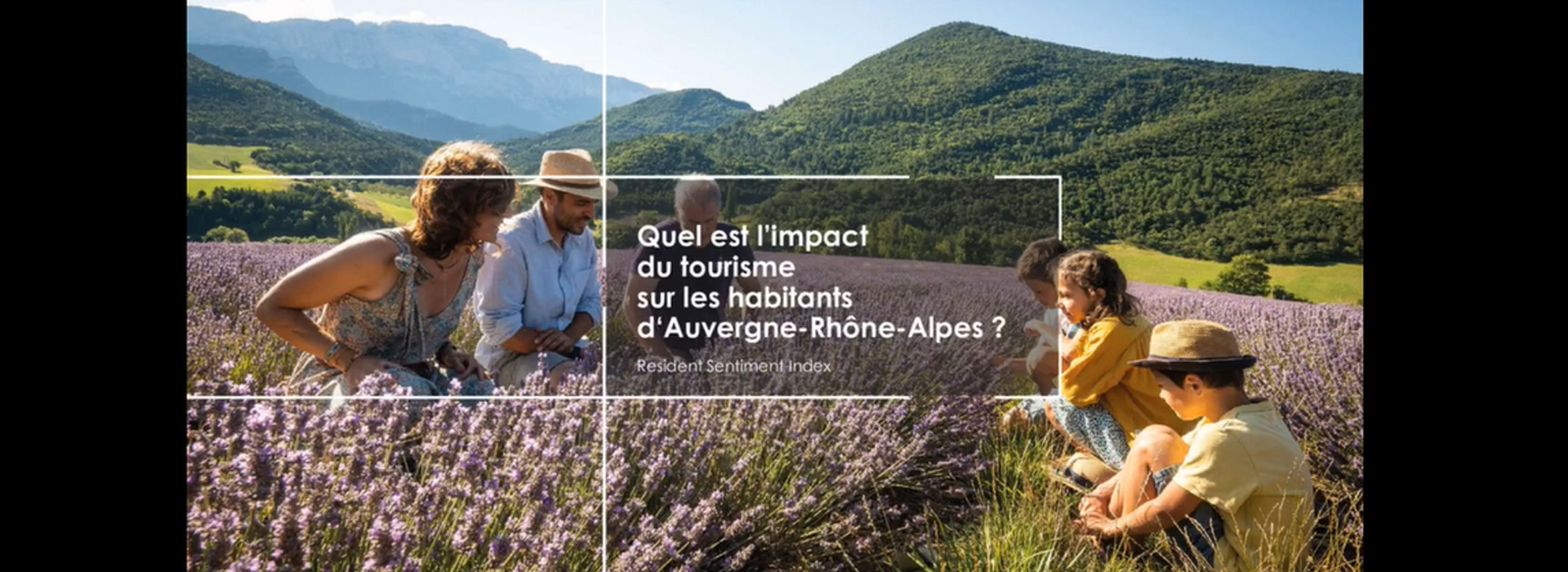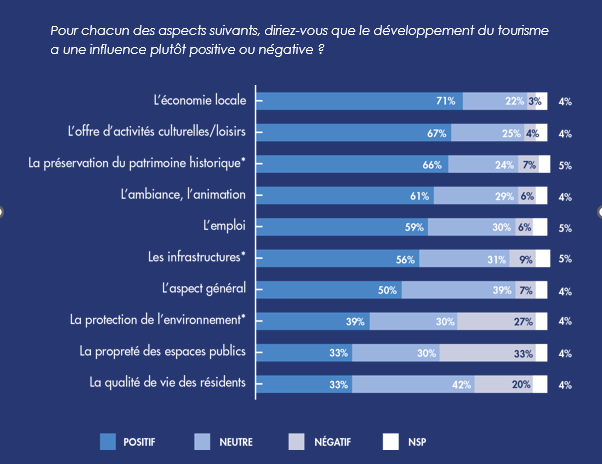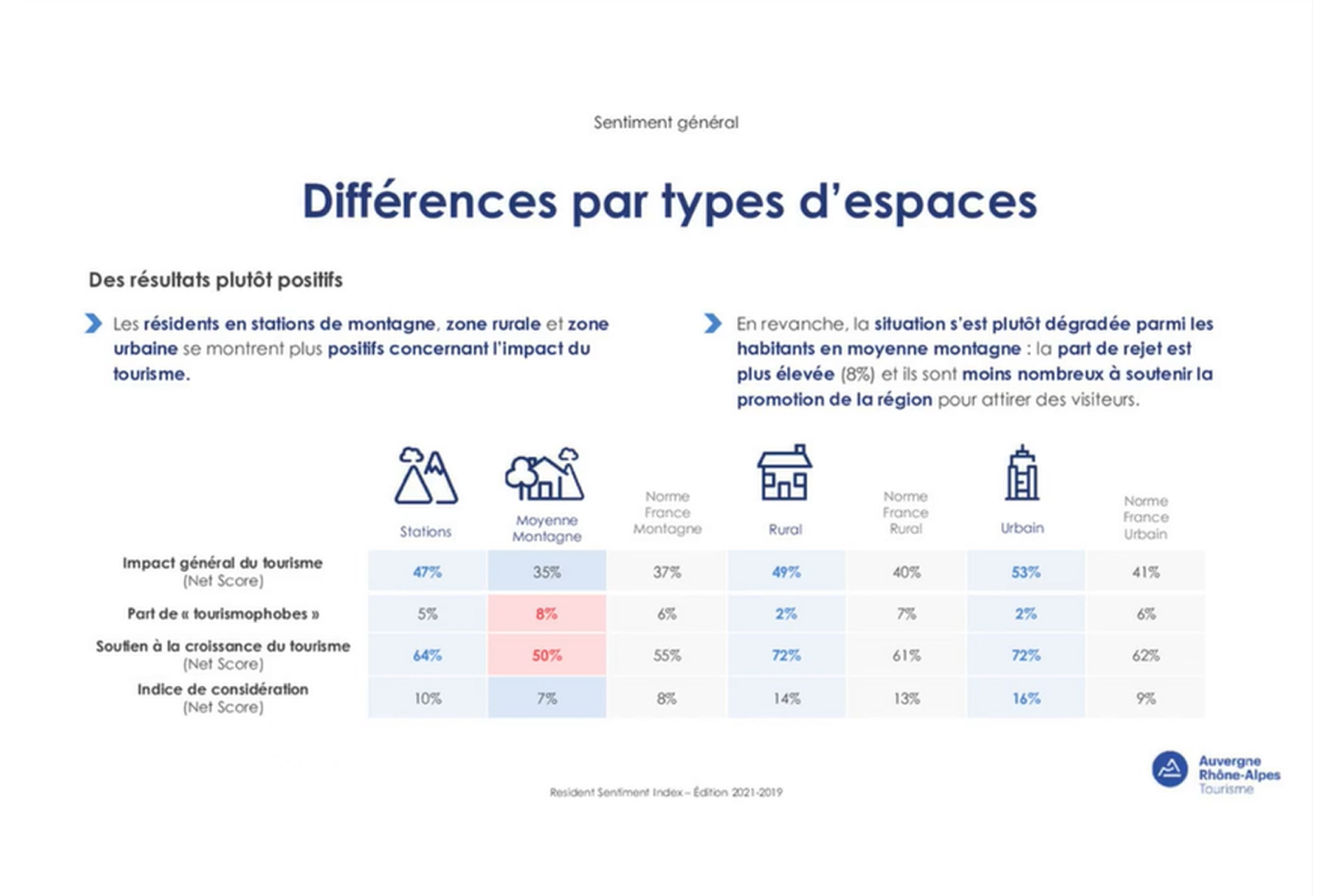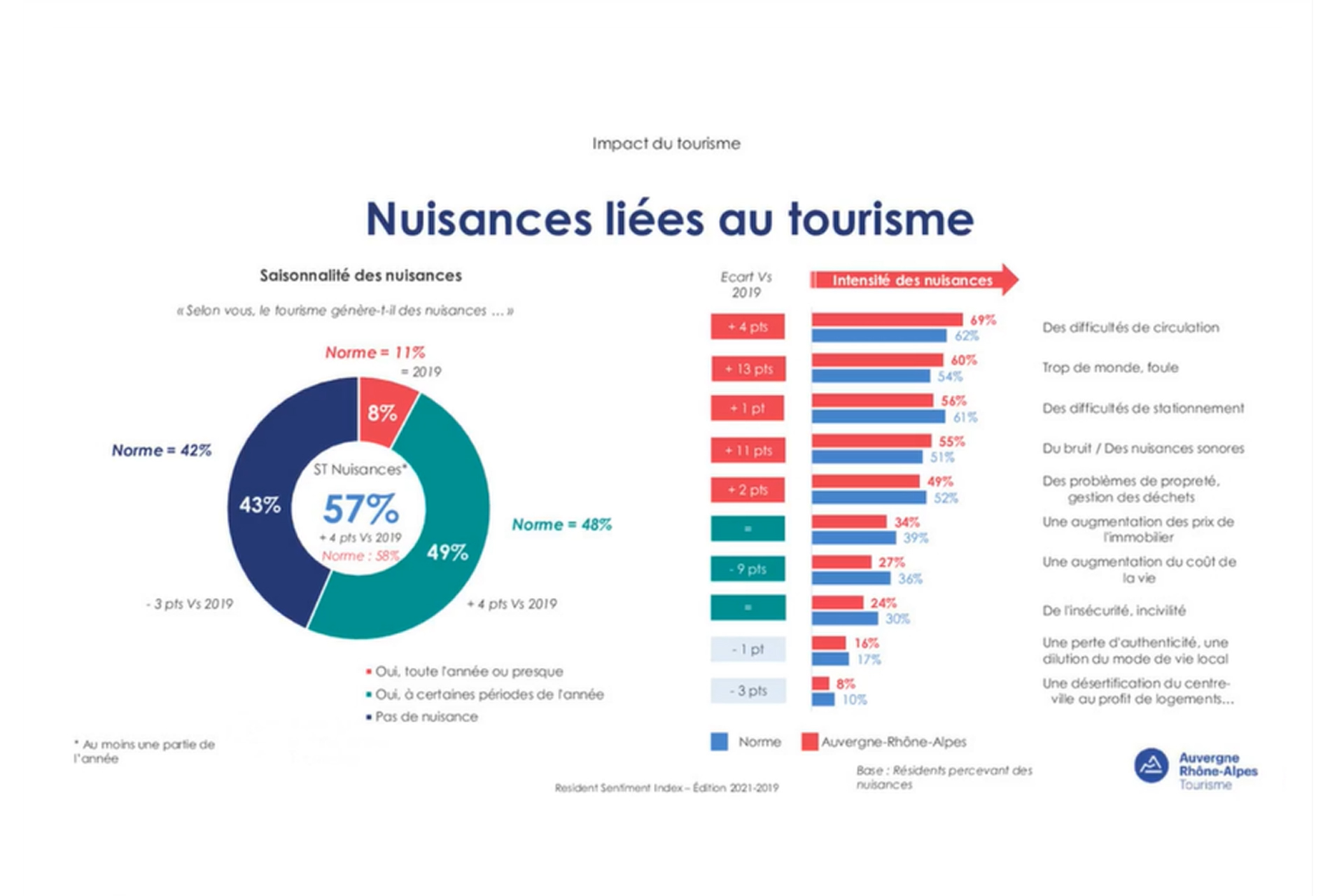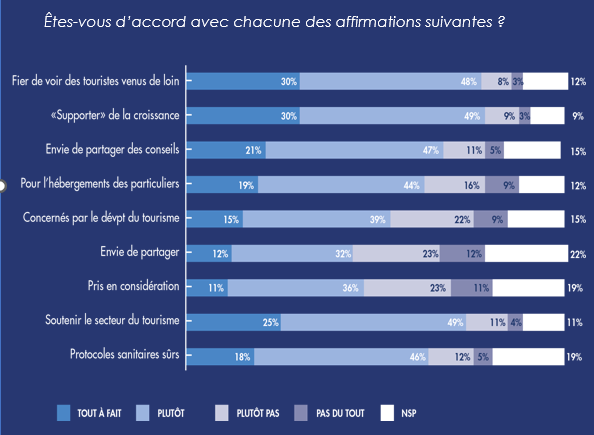Residents, tourism and mountains in the Auvergne-Rhône-Alpes region
Presentation
Survey to measure residents' feelings about tourism
In the changing health and energy context, benevolence is more than ever necessary towards tourists, professionals, the territory and its residents.It is in this context that the strategy of "Auvergne-Rhône-Alpes Tourisme" has been in place since 2018, a commitment that will be measured regularly in 2019 and 2021, and which is now being reviewed for 2022.
Discover through the study of the TCI Research consultancy commissioned by the AURA region, how inhabitants, tourism and mountains are combined through a central question: what impact does tourism have on the inhabitants of the Auvergne-Rhône-Alpes (AURA) region?
Objectives:
- To measure the feeling of the residents: how is the tourism development experienced by the residents? Are they willing to support tourism promotion? Do they feel sufficiently involved / consulted?- To diagnose the impact of tourism: does tourism bring more advantages or disadvantages? Economically, for the environment, for the quality of life? Do residents perceive any nuisance? If so, when and what?
With a focus on the types of habitat (resort, mid-mountain, countryside and town) in relation to the impact of tourist activity on the residents of the AURA region.
4 indicators for the inhabitants:
- General feeling towards tourism: 55% more positive than negative consequences, 28% as many positive as negative consequences and 6% more negative than positive consequences (9% resort, 14% medium mountain, 6% rural and 4% urban)
- Tourismophobia index: 3% more negative consequences + no more promotion of the region to attract tourists (5% resort, 8% mid-mountain, 2% rural and 2% urban)
- Index of support for tourism growth: 67% more promotion of the region to attract tourists, 7 points above the French norm (64% resort, 50% mid-mountain, 72% rural and 72% urban)
- Residents' consideration index: 13% the region's tourism policy takes well into account the impact on the life of the inhabitants (10% resort, 7% medium mountain, 14% rural and 16% urban)
Influences of tourism development:
- Rather positive: local economy, offer of cultural and leisure activities, preservation of historical heritage
- Rather negative: protection of the environment, cleanliness of public spaces, quality of life of residents
Nuisances from tourism:
- 49% at certain times of the year, 43% no nuisance and 8% all year round or almost all year round
- 69% traffic problems, 60% too many people/crowds (+13 points compared to 2019), 56% parking problems, 55% noise/noise pollution (+11 points compared to 2019)
Type of clientele - priority visitors:
More open to tourists from the local area (region), from France (domestic market) and there is a general desire to depend less on foreign customers.Additional data
Residents, the face of the destination
29.5% of AURA customers are local visitors (intra-regional), i.e. resident inhabitants, but not only!Resident professional actor of the territory, resident tourist (with accommodation), resident ambassador (prescriber to his peers), resident visitor (without accommodation), resident citizen (protects/defends his environment), resident service provider (renting a second home), resident greeter (shows his town)...
Ideas for good practices and solutions against nuisances
- For a better protection of the environment:
- distribute tourist flows: ecocounter at Achard lake and development project at the Croix de Chamrousse
- access to the site by reservation (taxation and demarketing)
- extend the length of stay: reinforcement of the season's wings, local tourism between seasons in good weather
- meet the high expectations of soft mobility: shuttle, carpooling, etc.
- For less stress: the silence of the mountains against noise pollution (lowering the stress hormone - cortisol)
- For fewer people and fewer crowds: favour alternatives to the must-sees of a destination ("off the beaten track")
In conclusion
With 67% of the population supporting the growth of tourism (i.e. 7 points above the French norm), the general balance is favourable at the regional level.There is clear support in mountain resorts, in rural and urban areas, but attention should be paid to the medium-sized mountains, which are subject to new flows of visitors seeking less human density and wide open spaces to recharge their batteries in "complete safety".
In fact, during the summers of 2020 and 2021, many city dwellers, anxious about the health crisis, went to these areas, which offered fresh air and "naturally" respected social distancing, but which did not always have the infrastructure to cope with this influx. This trend continued during the summer of 2022. In order to accompany these city dwellers who did not necessarily have the appropriate codes and behaviours, many destinations accompanied them.
To find out more, access the replay of the webseminar on the AURA Tourism website (caution only in French).


